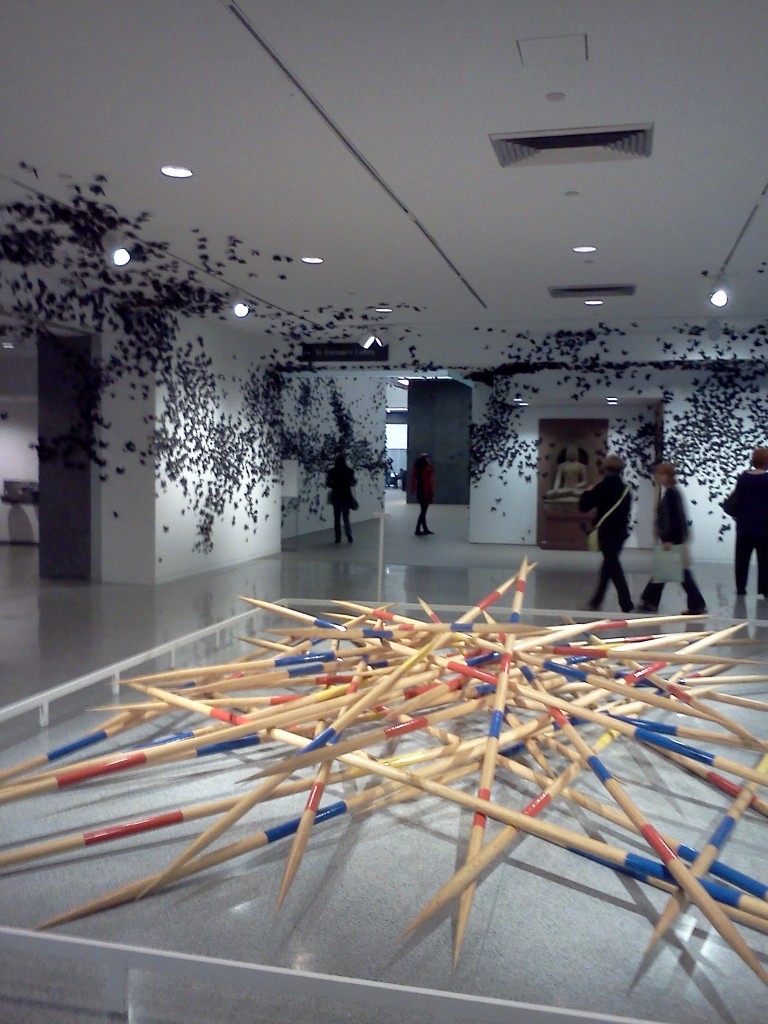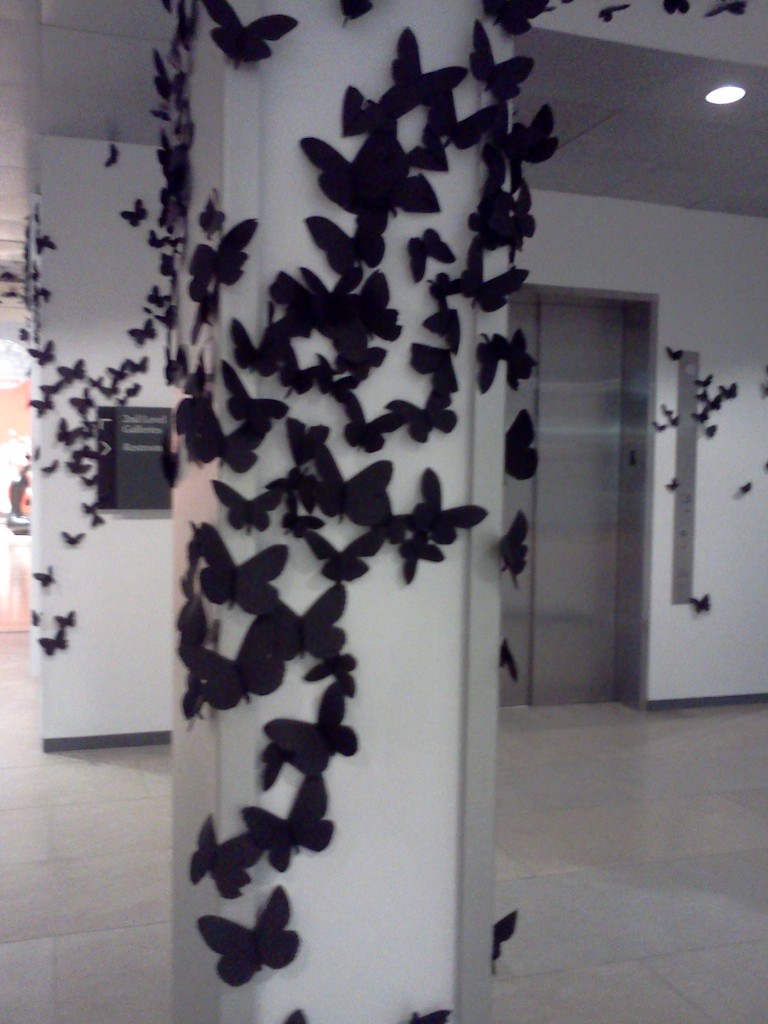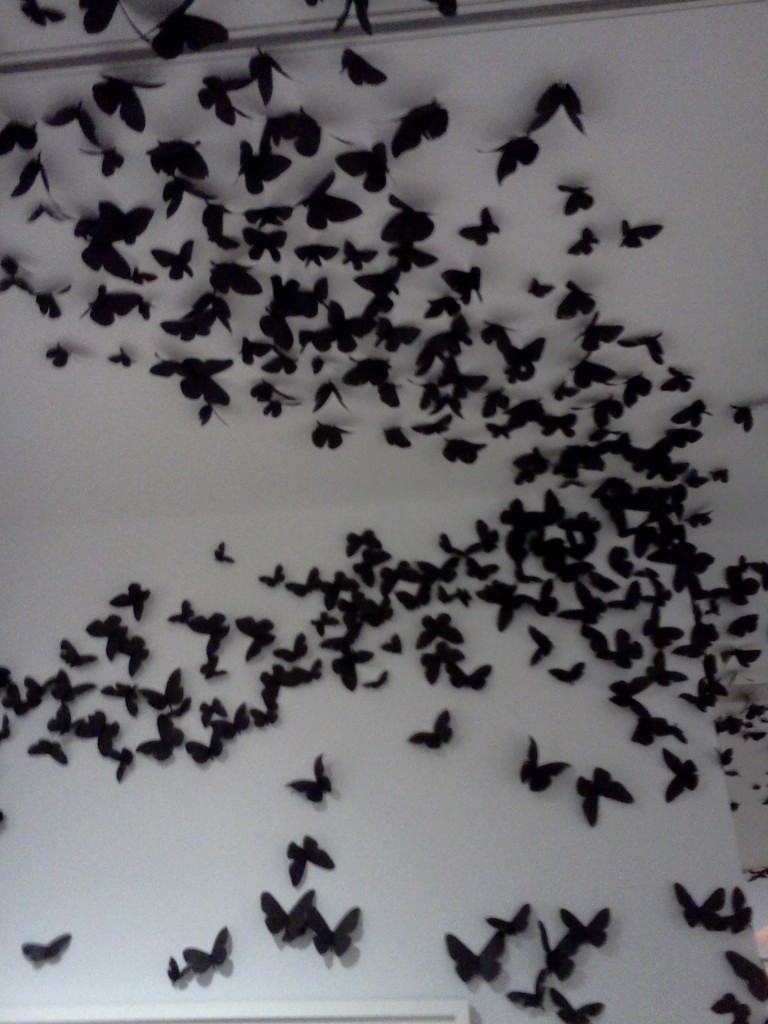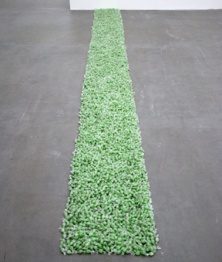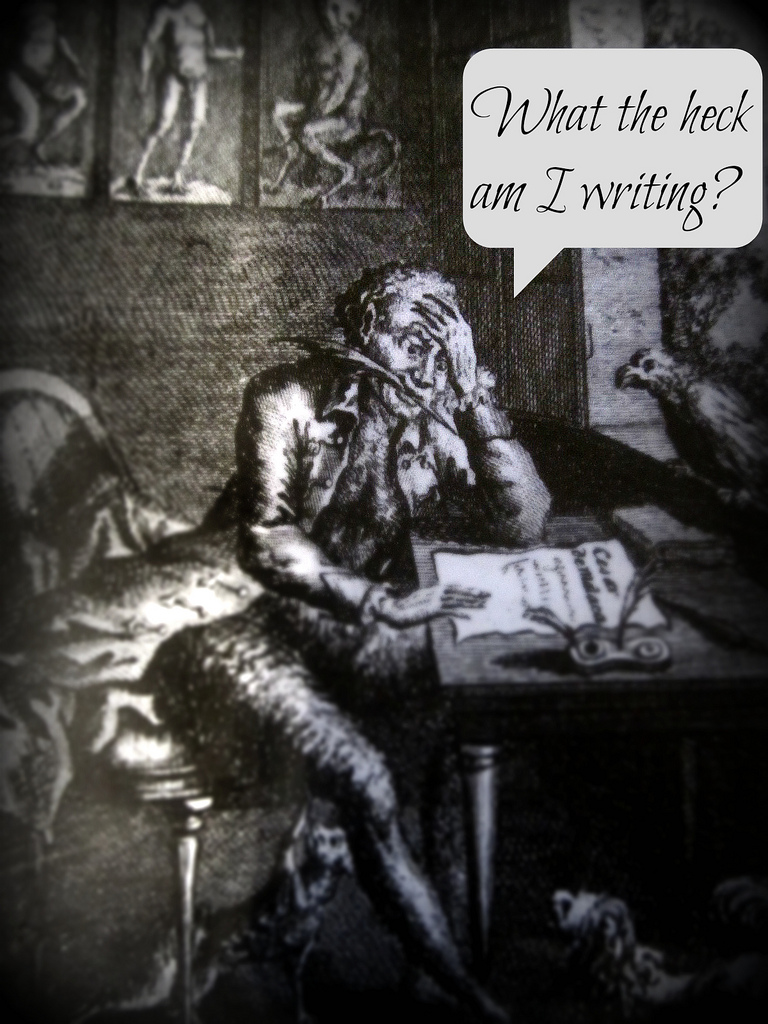Art Museums for 2 Year Olds
A couple weeks ago I took my 2-year-old to the Phoenix Art Museum–and she loved it. Her favorite exhibit was filled with modern art and was titled, “Order, Chaos, and the Space Between: Contemporary Latin American Art from the Diane and Bruce Halle Collection.”
This was one of the pieces. She got super excited and exclaimed, “Sticks! Touch it?” I said no, she couldn’t touch it, but she enjoyed looking at it from all sides.
In the background you can see one of the other pieces–thousands upon thousands of black butterfly sculptures. They were attached all through the front entrance areas of the museum. It was quite a sight.
It’s easy to fall into the trap, when looking at contemporary art, of trying to force meaning. For example, there were four glass boxes, each a different color, so I could read into that feelings of containment over the course of seasons or something along those lines. Here’s what my daughter read into them: “Look! Blue! Look! Yellow! Look! Red!” She experienced pure joy just at the coolness of the boxes and their colors.
My daughter’s approach framed my entire visit. Instead of finding deeper meaning, I just enjoyed the objects and colors as objects and colors, and in doing so, I left the museum with a different, better, fuller perspective. Ordinary things became extraordinary when enlarged (the sticks), filmed (there were three films of tops playing simultaneously), or put into a different context.
My daughter’s favorite part of the exhibit was this piece:
You probably can’t tell, but that’s a pile of candy. A very large pile of candy. (My daughter called it chocolate, but to her all candy is chocolate.) There was someone standing nearby, inviting you to take one. We were there in the afternoon, so the piece didn’t look quite as rectangular, and there were open holes on the floor. Candy can be art, and art certainly is sweet. And now my two year old keeps saying, “Go to museum! Get chocolate!”

